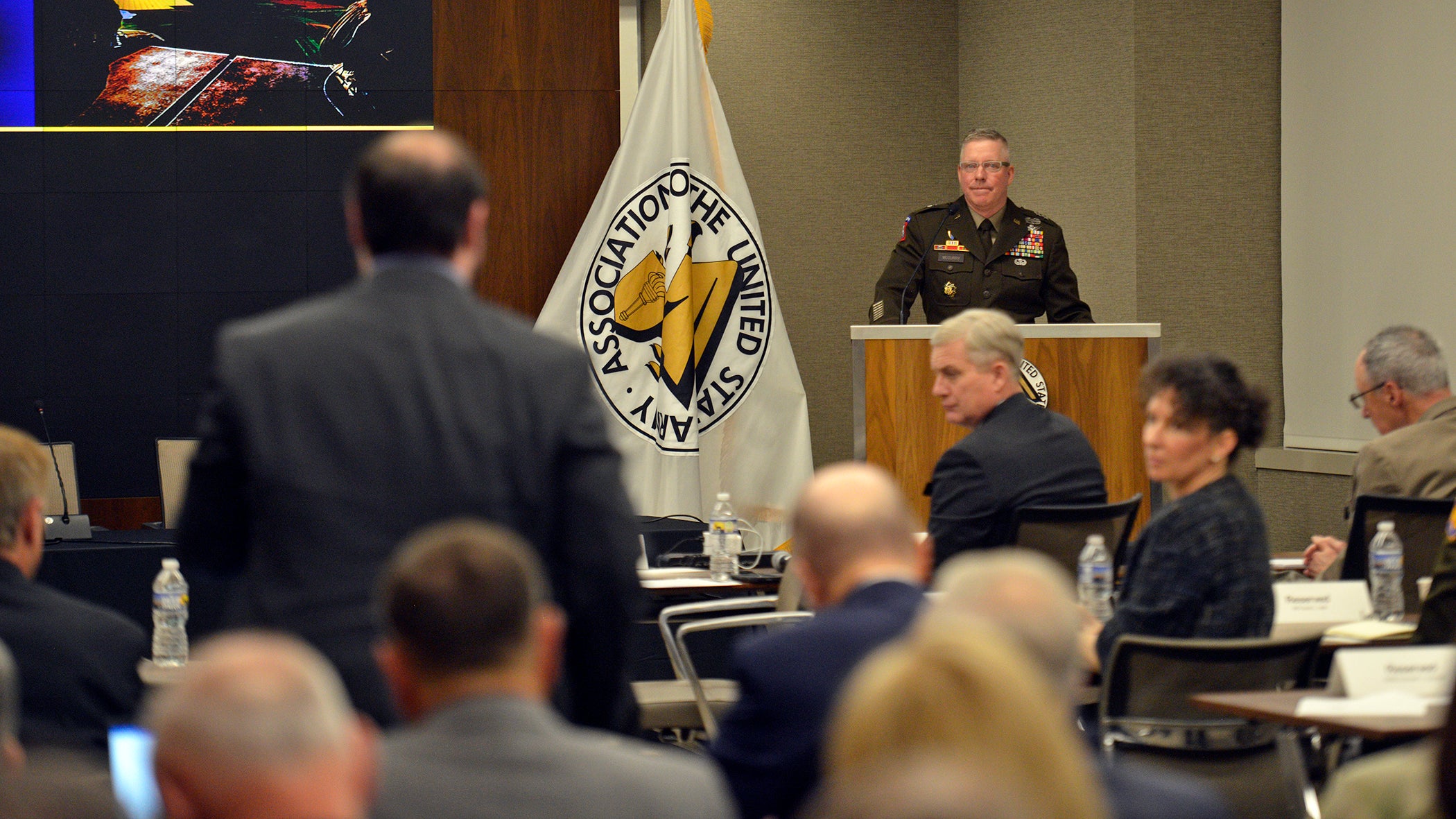Aviation Transformation Has ‘Great Momentum’
Aviation Transformation Has ‘Great Momentum’

As it approaches its 40th birthday, the Army aviation branch is transforming to operate and fight on a complex, expansive and lethal future battlefield, a pair of senior aviation leaders said.
But as the branch looks to new, leap-ahead aircraft that can fly faster and farther, expanded unmanned capabilities and new doctrine and aviation formations, Army aviation’s purpose has never wavered, said Maj. Gen. Michael McCurry, commanding general of the Aviation Center of Excellence and Fort Rucker, Alabama, and the 17th chief of the Army aviation branch.
Army aviation has always had a sacred trust with soldiers on the ground, McCurry said Feb. 23 before an audience of more than 120 people at an Army Aviation Hot Topic forum hosted by the Association of the U.S. Army.
“When that soldier on the ground needs to know what’s over the next hill, we’re going to go find out,” he said. “When they need a little more firepower, we’re going to bring it. When they need … extra beans, bullets or water, we’re going to put them there. God forbid, if they’re laying on the field of battle wounded, we’re going to go get them. That’s our why. That’s why we’ve existed, that’s why we exist today, and that’s why we exist tomorrow.”
The transformation coming to Army aviation will change the way the force fights, McCurry said.
The Army is “changing how we fight and what we fight with,” he said. In addition to updating doctrine, Army aviation also is looking to tailor combat aviation brigades for their division missions, giving “a little more punch to heavy divisions” and “a lot more mobility to light divisions,” McCurry said.
The branch also is modernizing professional military education while continuing “targeted modernization” to its current fleets of Black Hawk, Apache and Chinook helicopters, he said.
Amid all this change, the Army must maintain its readiness to fight today, said Maj. Gen. William Taylor, director of Army aviation in the office of the deputy Army chief of staff for operations, G-3/5/7. “There are aviation assets in every geographic combatant command fighting or assuring and deterring all across the world,” he said.
To strike the balance between readiness and transformation, the Army is taking a deliberate approach through its Regionally Aligned Readiness and Modernization Model, Taylor said. Also known as ReARMM, the model allows the Army to put new equipment in soldiers’ hands and give them adequate time to learn and train on the new capabilities, he said. The model also gives commanders more predictability, enabling them to better plan and train collective training without sacrificing readiness, Taylor said.
Another key element is working closely with industry, Taylor said. “We can’t get where we need to without you,” Taylor said to the industry members in the audience at AUSA.
During Project Convergence 2022 last fall, where the Army experimented with more than 300 new technologies, Taylor said it was “amazing” to see how closely the Army and industry are working together to get new capabilities into soldiers’ hands.
“What I see is great momentum,” Taylor said. “So, I’d ask our industry partners, as we continue to work, our commitment to you is continue to ensure that we are describing and being open with our requirements and where we’re going in the future, where we see friction points, to ensure that our aviation team has the best equipment they can have to fight the fight.”

